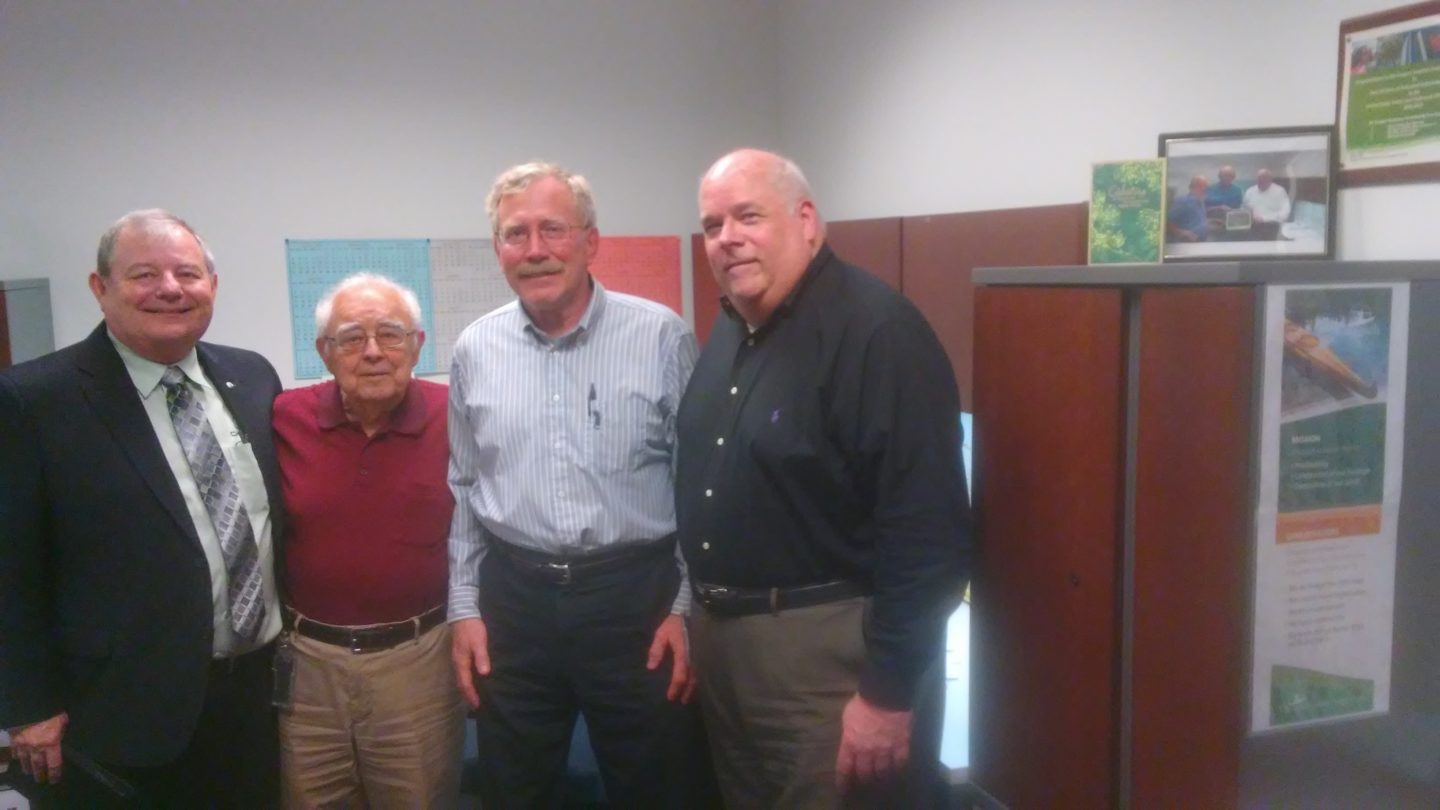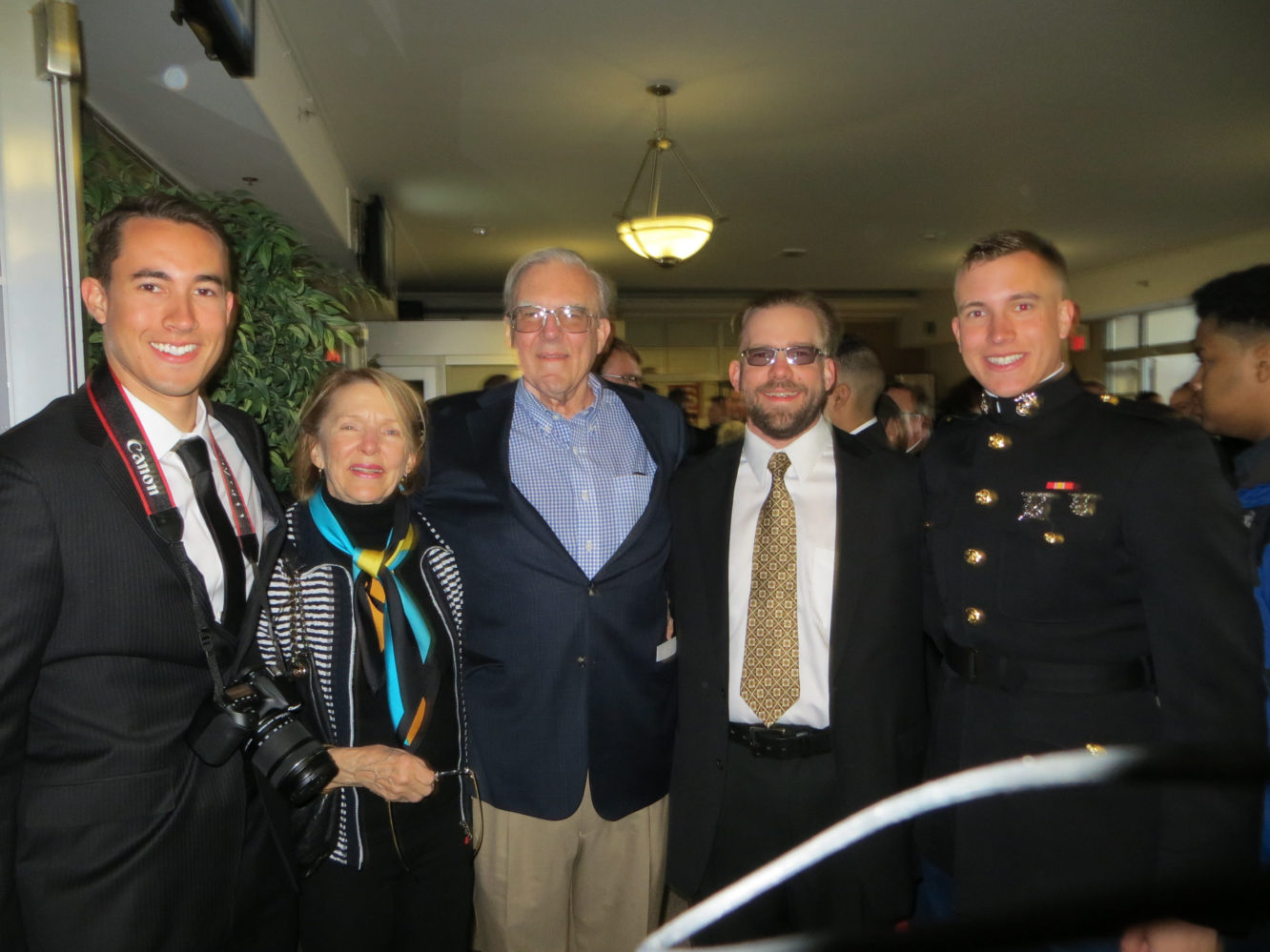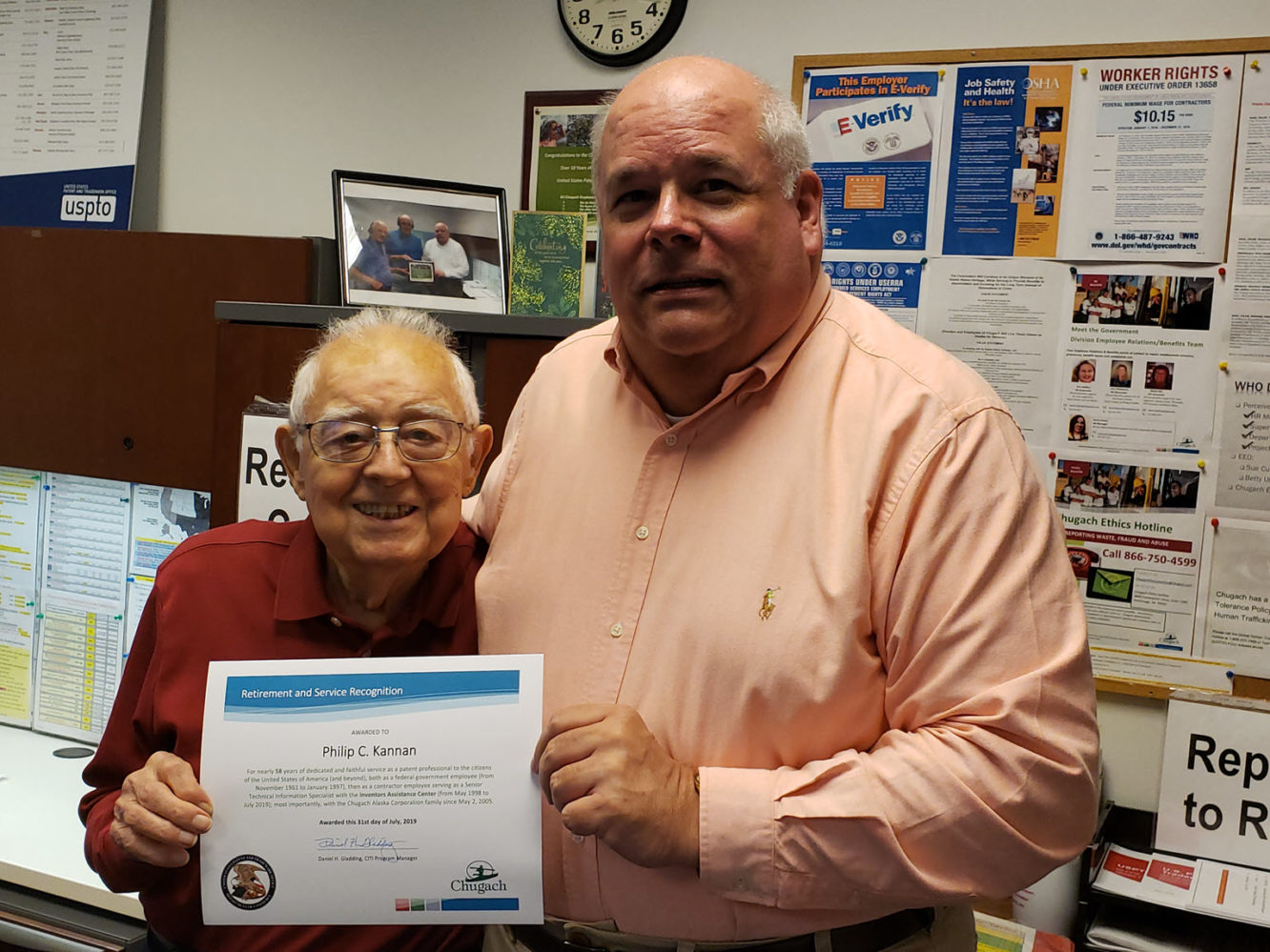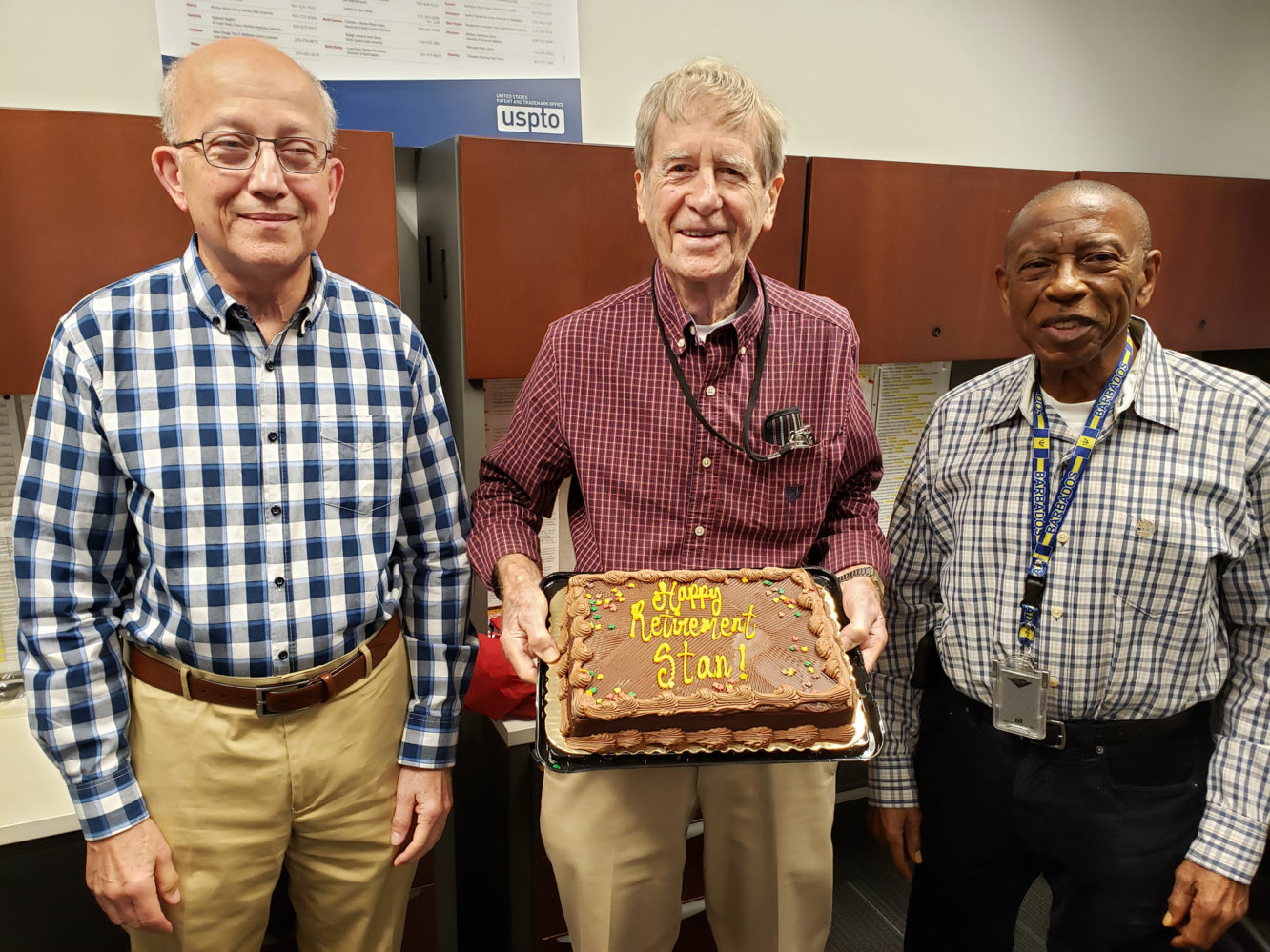Speaking at the 2019 International Intellectual Property Conference, Andrei Iancu, Under Secretary of Commerce for Intellectual Property and Director of the United States Patent and Trademark Office (USPTO), stated, “Human advancement has been consistently pushed forward by our inventors. They are our heroes. It is our inventors who will continue to push human development to even greater heights.”
Behind the scenes, a different host of heroes help innovators and entrepreneurs convert their ideas into intellectually protected property, ensuring that products remain the property of those who invented them. Since 2005, Chugach has had the privilege to be involved in this process through a contract with the USPTO. The Chugach employees who perform this work have an extraordinary range of experience, talent and maturity.
Daniel Gladding, Program Manager for Chugach Information Technology, Inc., leads this incredible pool of individuals. “I have the honor of managing the PTO-IAC contract at the USPTO headquarters in Alexandria, Virginia. This contract requires that each employee be a former federal employee retired from the USPTO who attained a minimum status of Primary Patent Examiner, though many retired as Supervisory Patent Examiners,” Gladding said. “Most are chemical engineers, civil engineers, electrical engineers and mechanical engineers, and many have a Juris Doctorate or law degree.”
These individuals comprise the Inventors Assistance Center (IAC). The IAC mission is to address customer inquiries and to provide patent assistance and information concerning patent examination policy, fees, forms, drawings and procedures. IAC staff interface with other departments within the USPTO and regularly direct calls to the proper business unit, technology center and art units. The IAC handles inquiries from every state and most U.S. territories, and from international countries from around the world.
“This team and the inventions they’ve examined come together to form an incredible story,” Gladding said. “Many of the things we take for granted and use in daily life were patented during their tenure at the USPTO.” Gladding goes on to identify one of the most unique aspects of the team he manages. “The average age of IAC workers range from 60 to 85, and they remain sharp as a tack and amazing at what they do.”
The age of his staff is a point of pride for Gladding. “Earlier this month, I had one employee retire with 63 years, 4 months of combined federal and contractor service. He started at the USPTO shortly after college, had a brief military deployment and returned to the USPTO until his retirement in 1998. He then immediately joined the Patent Assistance Center, which was later renamed the IAC.”
The extraordinary career span of IAC staff allows the USPTO to wade through volumes and volumes of applications and provide an effective mechanism to protect new ideas and investments in innovation and creativity. “I’m proud to say that the IAC remains one of the top performing contact centers across the entire USPTO enterprise.”
But it’s not just about work for members of the IAC. One of Chugach’s Core Behaviors is ‘We Build Community,’ which means that, wherever possible, our employees endeavor to be a positive influence in the communities where they live and work. The employees working under the IAC contract definitely uphold this ideal. An overview of their involvement includes:
- Assisting with lunch service and helping patients at a local nursing home
- Volunteering for the advancement of individuals with intellectual disabilities
- Ushering at Wolf Trap National Park for the Performing Arts during the summer season
- Preparing sandwiches for the homeless population in Northern Virginia
- Transporting donated food to a local food bank
- Collecting magazines and books for local Veterans Hospitals
- Distributing toys around the holidays for local shelters
- Driving people who can no longer drive to medical and other appointments
- Staffing a hotline taking calls from depressed and suicidal callers
- Coordinating preparation of large church lunches for funerals
- Serving on the Board of Directors of a Kiwanis Club
- Calling bingo at a local nursing home
- Organizing donations at Easter for 250+ mental patients
- Working at a county food bank and delivering food to inner-city residents
- Providing rides for seniors to shop for groceries
While this contract has a very small number of workers compared to the more than 5,700 employees who work for Chugach around the globe, it ranks as one of the largest in terms of skillsets, experience and the mission they fulfil to safeguard the strength and vitality of the world’s economy, and they are definitely doing their share to build community.
“They’re small but mighty in every way,” said Tim Hopper, President of Chugach Government Solutions (CGS). “I’m proud to have each and every one of them as teammates. They retired from Government service, yet continue to provide their expert technical advice and experience to millions.”
Chugach Information Technology, Inc. is a CGS subsidiary. Click here to see the latest Chugach opportunities and see how your talents and skills can fit into the Chugach family of companies.
Highlights of the patents issued by IAC examiners include:
- Medical-related:
- MRI (first patent for this imaging technology)
- Finger clip pulse oximeter (used to check oxygen saturation, known as “pulse ox”)
- Valved multiple blood sampler (now used every time we have a blood sample taken)
- Implantable programmable medication infusion systems (stores & delivers medication)
- Paxil (paroxetine), an antidepressant drug still widely prescribed today
- Fluorouracil (adrucil), a widely used cancer chemotherapy agent
- Indacin (indomethacin), an anti-arthritis medicine
- Cryptographic system (one of the longest suppressed/suspended patents from filing date until issue—1933 – 2000, since encryption was kept a secret from the public and used in the military)
- Method and apparatus for guilt detection (lie detector machine measuring pulse rate changes)
- Components of computer disk drives (mechanical and electrical subsystems and parts of a drive)
- Recyclable plastic cash register receipts (universally used today)
- Microwave antennas (used in satellite & military communication; e.g., dish, parabolic, horn feed)
- LED push button illuminated switch (now used in most illuminated switches)
- Laser technology; picture tube technology; electric arc furnace technology
- Floor covering with built-in heater (widely used in pre-school locations)






